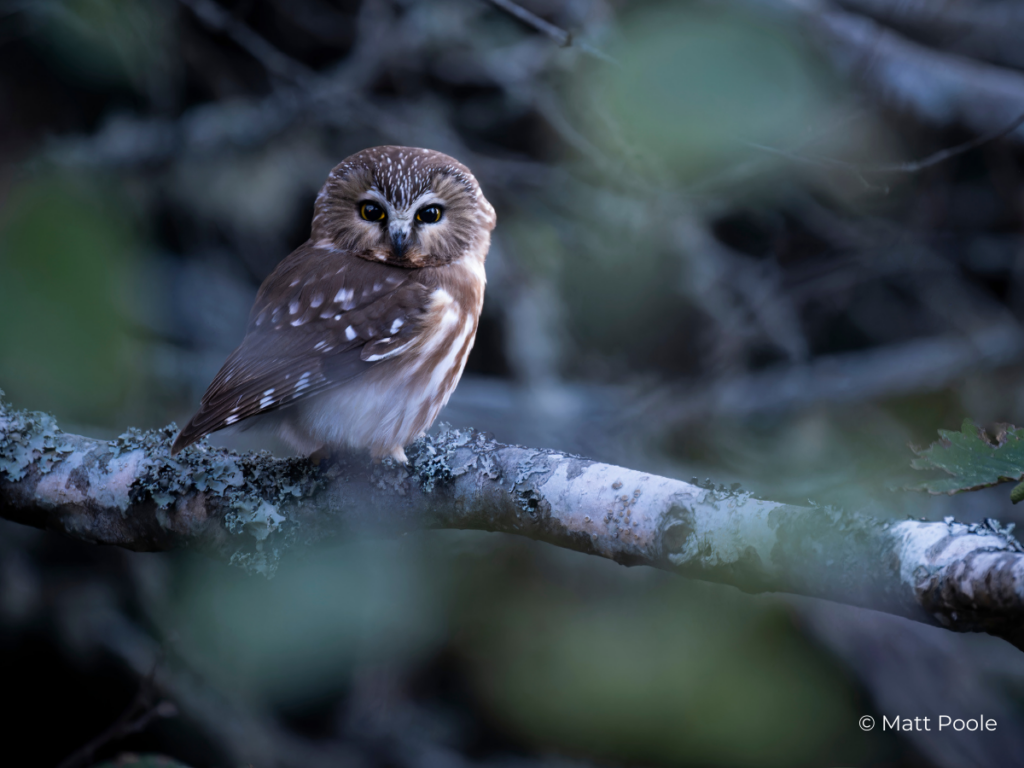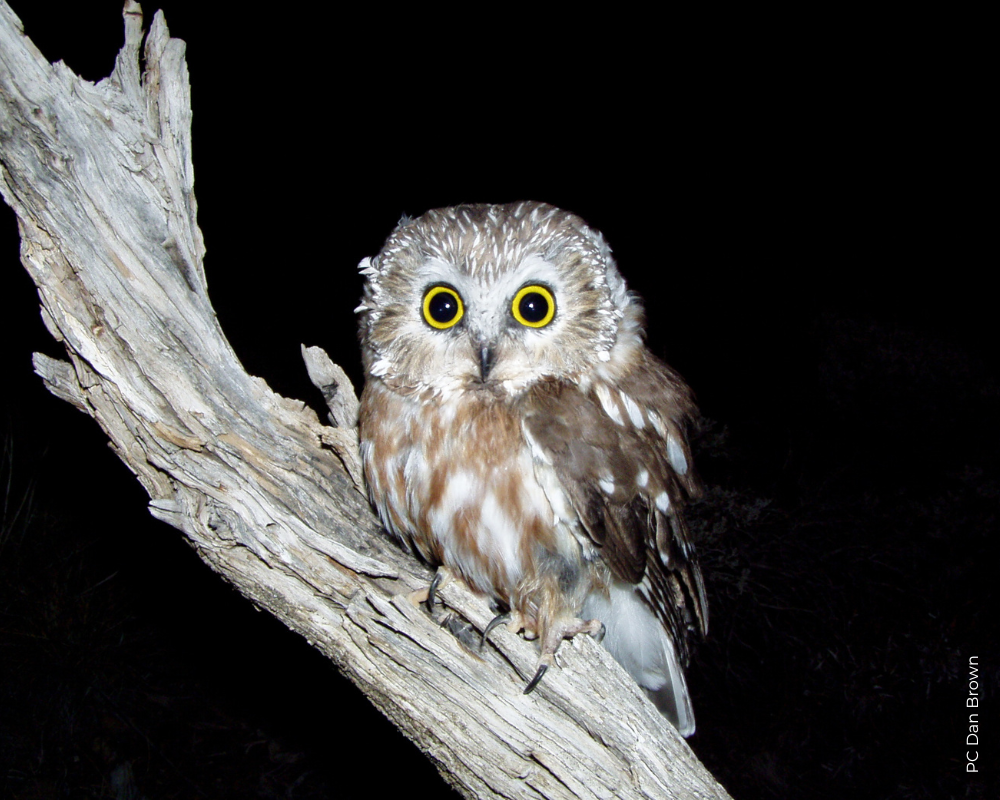Overview
The Northern Saw-whet Owl (about the size of a Robin) is the smallest owl in Eastern North America – but Flammulated, Elf, Pygmy, and Ferruginous Pygmy Owls are smaller in the West. Like most owls, Saw-whet Owls are nocturnal, so although they are common, they are hard to find due to their secretive nature. They roost (‘sleep with one eye open”) during the day in evergreen trees or trees with heavy foliage so they stay out of sight of predators (hawks and larger owls) and pesky songbirds. Often, it is the commotion of a songbird or group of birds that tips bird watchers off to an owl’s presence.
Saw-whet Owls reside year-round in extensive forests across northern North America, sometimes found in western shrub-steppe habitats with available cavities for nesting and roosting. They prefer mature forests with an open understory for hunting. They also nest in deciduous woods and coniferous swamps. Saw-whet Owls are strictly cavity nesters, using abandoned woodpecker holes in trees (dead trees as well as live), but will also use man-made boxes placed on tree trunks. Their main prey is mice, voles, juvenile pocket gophers and chipmunks, and even small bats. A mouse or small mammal is often two meals for a Saw-whet Owl, hiding the leftovers for later. They also eat small birds, especially on migration, and have even been known to take other small owls. Saw-whet Owls are highly migratory, found all the way to the southernmost US in winter.
Saw-whet Owls have a loud, repeated, shrill call that they get their name from since the call resembles the sound of a saw being sharpened on a whetting stone. They also have a distinctive “too-too-too” call, a high raspy shrill, and high-pitched squeaks and barks while in flight during nighttime migration. As with most owls, they are heard more often than seen.




